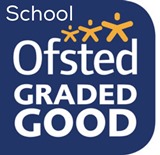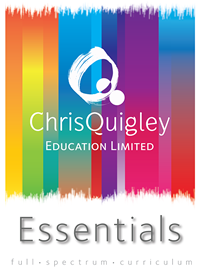Remote Education Expectations

Where a class, group or a small number of pupils need to self-isolate, or local restrictions require pupils to remain at home, we expect schools to have the capacity to offer immediate remote education. Schools are expected to consider how to continue to improve the quality of their existing curriculum, for example through technology, and have a strong contingency plan in place for remote education provision by the end of September. This planning will be particularly important to support a scenario in which the logistical challenges of remote provision are greatest, for example where large numbers of pupils are required to remain at home.
In developing these contingency plans, we expect schools to:
- use a curriculum sequence that allows access to high-quality online and offline resources and teaching videos and that is linked to the school’s curriculum expectations
- give access to high quality remote education resources
- select the online tools that will be consistently used across the school to allow interaction, assessment and feedback and make sure staff are trained in their use
- provide printed resources, such as textbooks and workbooks, for pupils who do not have suitable online access
- recognise that younger pupils and some pupils with SEND may not be able to access remote education without adult support and so schools should work with families to deliver a broad and ambitious curriculum
When teaching pupils remotely, we expect schools to:
- set assignments so that pupils have meaningful and ambitious work each day in a number of different subjects
- teach a planned and well-sequenced curriculum so that knowledge and skills are built incrementally, with a good level of clarity about what is intended to be taught and practised in each subject
- provide frequent, clear explanations of new content, delivered by a teacher in the school or through high-quality curriculum resources or videos
- gauge how well pupils are progressing through the curriculum, using questions and other suitable tasks, and set a clear expectation on how regularly teachers will check work
- enable teachers to adjust the pace or difficulty of what is being taught in response to questions or assessments, including, where necessary, revising material or simplifying explanations to ensure pupils’ understanding
- plan a programme that is of equivalent length to the core teaching pupils would receive in school, ideally including daily contact with teachers
For secondary schools teaching pupils remotely in a rota system because of tier 2 local restrictions, modified remote education expectations apply. These can be found in how schools can plan for tier 2 local restriction.
We expect schools to consider these expectations in relation to the pupils’ age, stage of development or special educational needs, for example where this would place significant demands on parents’ help or support. We expect schools to avoid an over-reliance on long-term projects or internet research activities.
We have now published a temporary continuity direction which makes it clear that schools have a duty to provide remote education for state-funded, school-age children unable to attend school due to coronavirus (COVID-19). This will come into effect from 22 October 2020. The direction poses no additional expectations on the quality of remote education expected of schools beyond those set out in this guidance.
SPECIAL EDUCATIONAL NEEDS
For pupils with SEND, their teachers are best-placed to know how the pupil’s needs can be most effectively met to ensure they continue to make progress even if they are not able to be in school due to self-isolating. The requirement for schools to use their best endeavours to secure the special educational provision called for by the pupils’ special educational needs remains in place.
Schools should work collaboratively with families, putting in place reasonable adjustments as necessary, so that pupils with SEND can successfully access remote education alongside their peers.
Where a pupil has provision specified within their EHC plan, it remains the duty of the local authority and any health bodies to secure or arrange the delivery of this in the setting that the plan names. However, there may be times when it becomes very difficult to do so, for example, if they are self-isolating. In this situation, decisions on how provision can be delivered should be informed by relevant considerations including, for example, the types of services that the pupil can access remotely, for example, online teaching and remote sessions with different types of therapists. These decisions should be considered on a case by case basis, avoiding a one size fits all approach.
VULNERABLE CHILDREN
Where individuals who are self-isolating are within our definition of vulnerable, it is important that schools put systems in place to keep in contact with them.
When a vulnerable child is asked to self-isolate, schools should notify their social worker (if they have one). School leaders should then agree with the social worker the best way to maintain contact and offer support to the vulnerable child or young person.
Schools should also have in place procedures to check if a vulnerable child is able to access remote education support, to support them to access it (as far as possible) and to regularly check if they are doing so.
DELIVERING REMOTE EDUCATION SAFELY
Keeping children safe online is essential. The statutory guidance keeping children safe in education provides schools and colleges with information on what they should be doing to protect their pupils online.
Support on delivering online remote education safely is available from:
- safe remote learning, published by SWGfL
- online safety and safeguarding, published by LGfL, which covers safe remote learning
- the National Cyber Security Centre, which includes which video conference service is right for you and using video conferencing services securely
- safeguarding and remote education during coronavirus (COVID-19)
- annex C of keeping children safe in education
REMOTE EDUCATION SUPPORT
Read how you can get help with remote education for links to a range of support for schools.
This support has been co-designed with schools and will include a range of school-led webinars and resources intended to share good practice. This is in addition to the video lessons offered by the sector-led Oak National Academy and other providers of quality education resources.
Available support includes peer-to-peer advice and training through the EdTech Demonstrator programme, as well as guidance on how schools can order devices and get help with technology for remote education.







